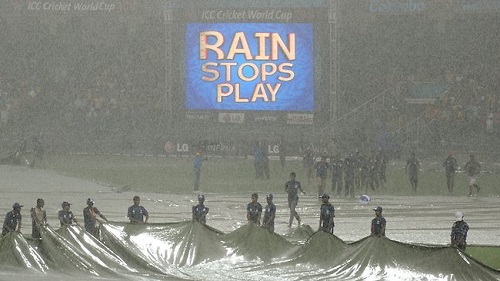DLS Full Form: If you too love to watch cricket then you will also know that cricket is a game full of uncertainties, although determining the winner in most of the games is relatively straightforward, cricket is a game where many factors play a role. can affect the results. Some of these factors include weather, pitch condition etc.
And because of all these factors, cricket has developed rules of various methods to determine the winner when the match is interrupted or stopped for some reason. And among them there is also a DLS rule which is used especially when the match is interrupted due to rain but do you know what is the DLS rule, its full form and What is Duckworth-Lewis method in cricket?
So you can read today’s article carefully till the end. And from the full form of DLS to what is the dls method, and when it is applied in cricket, we can get all kinds of information, so let’s know about the DLS Method in detail.
DLS Full Form
The full form of DLS method in cricket is “Duckworth–Lewis–Stern method”. And it is a type of cricket rule whereby when a match is interrupted by rain, a new target is set by reducing the overs, and the match is decided.
DLS Full Form : Duckworth–Lewis–Stern method
- D- Duckworth
- L – Lewis–Stern
- S – Method
What is DLS method in cricket and how is it calculated?
In the cricket world, DLS is a rule used to determine the winner in a limited overs cricket match that is interrupted by rain or other factors, it is widely used in international cricket and many other T20 franchises. is done.
If we talk in simple language, then dls method is used in the cricket world when when the match is interrupted due to rain, a new target is set by reducing the overs, and that match is taken to a decision.
What is the history behind the Duckworth-Lewis method?

The DLS method is named after its creators Frank Duckworth and Tony Lewis. This method was first introduced in 1997 after a rain-affected match between Zimbabwe and England. The match was abandoned due to rain and both teams were awarded one point each. However, both Duckworth and Lewis felt that the method used to determine the results was inappropriate and could be improved.
They collaborated to create a new formula that would better reflect playing conditions when interrupted by rain or other factors. The new method was named the Duckworth–Lewis method and was first used in a One Day International (ODI) match between Zimbabwe and England in 1998.
How the DLS method works?
The DLS method is a complex mathematical formula that takes into account various factors, including the number of overs played, the number of wickets lost and the run rate of the team batting first. The formula is constantly updated as the game progresses, taking into account the fall of wickets, the introduction of powerplays and other factors affecting the game.
The DLS method works by calculating the target score for the team batting second based on the number of wickets they are required to bat and the number of wickets. The target score is calculated based on the run rate of the team batting first, with adjustments made for the loss of any wickets or loss of overs due to rain or other factors.

For example, suppose the team batting first scores 250 runs in the stipulated 50 overs. If play is interrupted by rain, and the team batting second has only 40 overs to bat, the target score will be adjusted based on the run rate of the team batting first.
If the run rate of the team batting first was 5 runs per over, the target score for the team batting second would be 200 runs (5 runs per over times 40 overs).
However, if the team batting first lost wickets early in their innings, the target score will be adjusted downwards to reflect the fact that they did not score as many runs as they would have if they had not lost.
FAQ?
So let us now know the answers to some questions related to dls method about which everyone often wants to know.
Q.What is the DLS method in the match?
Ans: Duckworth-Lewis method is a rule adopted in any kind of adverse geographical conditions and other situations during a limited-overs match of cricket, so that the match can reach its decision. These rules are recognized by the International Cricket Council. Under this rule, new targets are set in the reduced overs.
Q. How is DL method calculated in cricket?
Ans: The DLS method sets the target (and decides the result) by calculating how many runs the teams should have scored (and would have scored) if the resources available to both sides were equal. To calculate a goal, the formula can simply be expressed as: Team 2’s cross score = Team 1’s score x (Team 2’s resources/Team 1’s resources).
Q. What does DLS mean?
Ans: DLS method in cricket means “Duckworth-Lewis-Stern method” in English language.
conclusion
In today’s article, we have learned about the very good rules of cricket, the full form of DLS and what is DLS etc. So we can hope that after reading this article, you will get all the information related to dls method. Must have got the information.